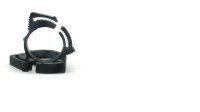scopeusa
Jet Boat Addict
- Messages
- 72
- Reaction score
- 39
- Points
- 107
- Location
- Providenciales
- Boat Make
- Yamaha
- Year
- 2008
- Boat Model
- SX
- Boat Length
- 23
I have been off the radar for a while sorting some legal stuff but have been wanting to address my rusty constant pressure hose clip issues. I was considering a number of options and have hunted high and low. primochill.com have a steel offering which may suit some applications at 89 cents a pop. (see link)
http://www.primochill.com/?post_type=product&s=steel+spring+clamp
The problem with these is you need to separate the hose connections to slide them on not so easy at the bottom of the engine right at the back. You can get a similar clip from Norma
http://www.normagroup.com/norma.nsf/id/Products_EN
Then there are the Breeze SS constant pressure clamps which backed off all the way would alloy your to open it and fit it around the hose with the pipe still connected.
http://www.breezehoseclamps.com/breeze/constant-torque/
I then stumbled across these again at priomchill.com said to be good for pressures up to 200 PSI an open clip with double ratchet teeth available in 3/8, 1/2, 5/8, 3/4 and 1" in different colors. Operating temp 225F with occasional peak at 340F. No rust problems here.
Any thoughts anyone???
http://www.primochill.com/?post_type=product&s=steel+spring+clamp
The problem with these is you need to separate the hose connections to slide them on not so easy at the bottom of the engine right at the back. You can get a similar clip from Norma
http://www.normagroup.com/norma.nsf/id/Products_EN
Then there are the Breeze SS constant pressure clamps which backed off all the way would alloy your to open it and fit it around the hose with the pipe still connected.
http://www.breezehoseclamps.com/breeze/constant-torque/
I then stumbled across these again at priomchill.com said to be good for pressures up to 200 PSI an open clip with double ratchet teeth available in 3/8, 1/2, 5/8, 3/4 and 1" in different colors. Operating temp 225F with occasional peak at 340F. No rust problems here.
Any thoughts anyone???

